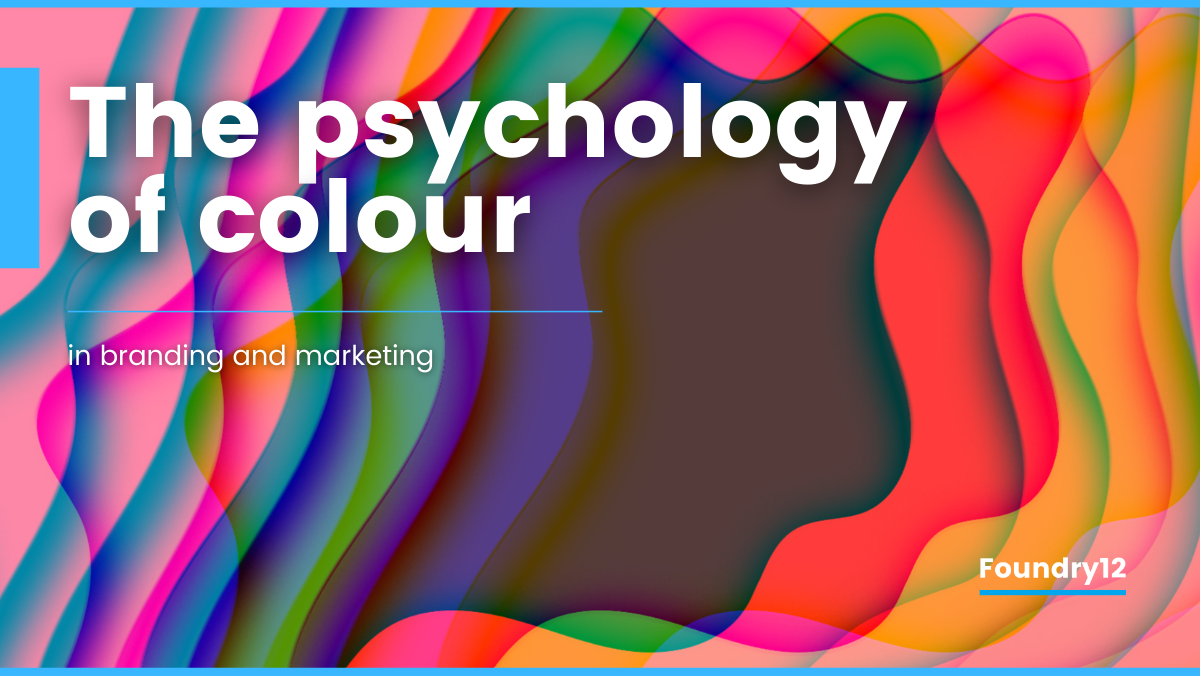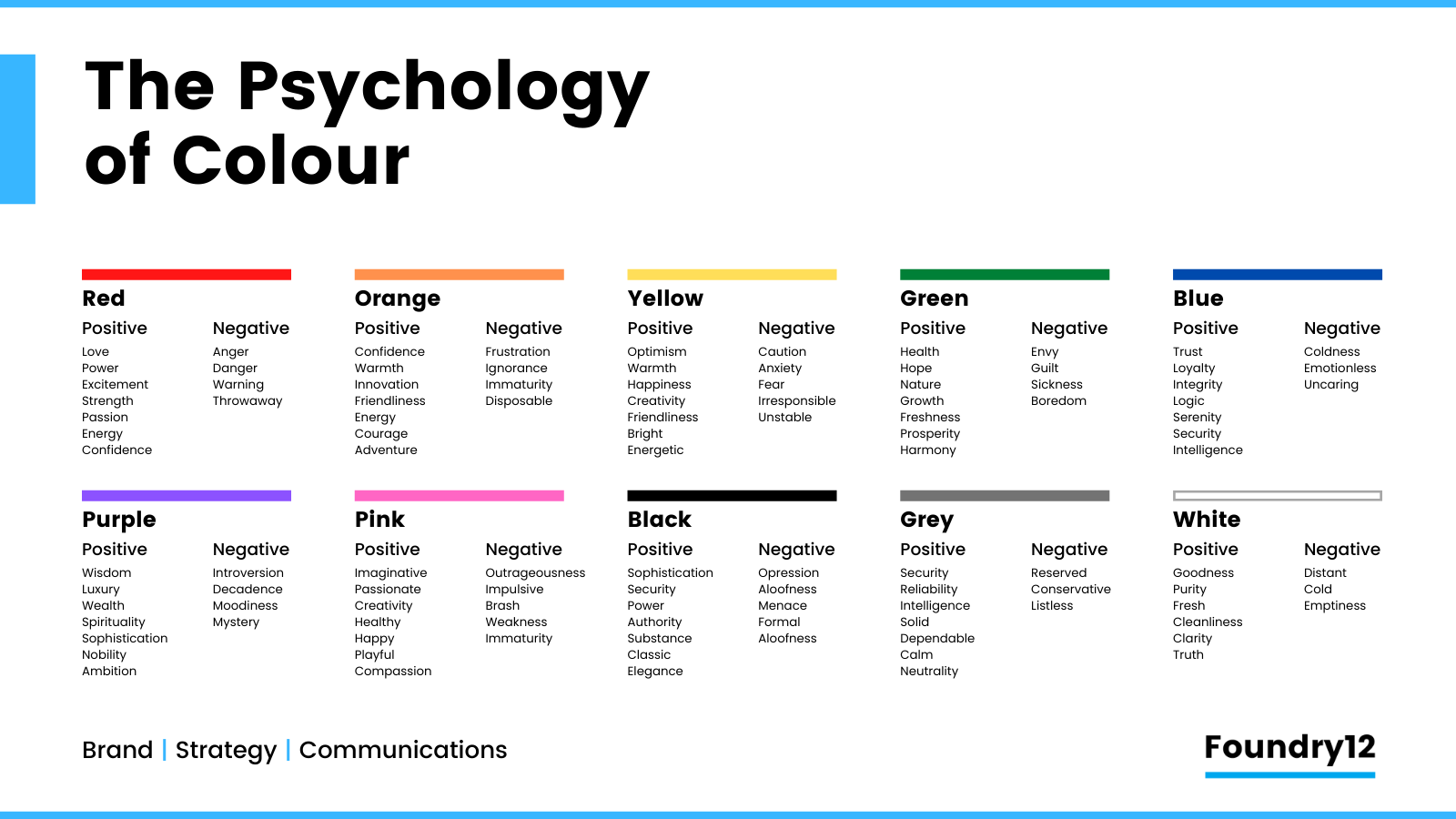Where does the psychology of colour in branding and marketing come from?
We’re surrounded by colour. From the natural world to the clothes we wear, the furniture in our homes or the technology we interact with, our lives are brought to life in a vivid array of colour. It plays a major role in our visual perception, influencing our reactions to the world around us.
Colours have the ability to affect our psyche in different ways. They set a mood, convey an emotion or invoke specific feelings. And this intrinsic link we possess between colour and emotion determines many of our decisions on a daily basis. It’s a far deeper connection than simply preferring one colour over another. Our brains automatically associate certain colours with certain emotions and characteristics.
How our emotions are affected
Colours affect people’s emotions due to several reasons including:
- Natural perception – for instance, we automatically connect green with nature and the environment, blue with sky, orange and yellow with warmth and sunshine.
- Social conditioning – specific colours are used in particular contexts so often that people automatically connect them. For example, most people associate a ‘red’ signal with a ‘stop’ sign.
- Personal memories – our subconscious registers colours from the places we were during certain situations and as a result some colours trigger particular associations.
- Cultural influences – colours have different interpretations in different parts of the world. For example, red is an auspicious colour in many Asian countries, green is good luck in Ireland or the US.
A powerful tool for brands
Which is why the psychology of colour is a powerful tool in design and branding.
When it comes to your brand identity, colour is the first thing people will notice. And as colour has such a strong influence on our emotions, having a fundamental grasp and understanding of colour perception is essential for brands.
Selecting the right colours is critical when building an identity that sets the tone and personality of your company. Colours should be used to evoke appropriate audience reactions, shape perception and create liking or preference.
This is true for all of your business’s marketing assets, from the logo design to the website, advertising, collateral and all other content.
Take for example the website for a yoga instructor. Which colours immediately come to mind? Typical colour palettes for this type of business would involve light or neutral shades like beige, white or pale pink. These colours create a sense of calm and relaxation. Selecting a colour palette made from a stark combination of black and red or orange wouldn’t reflect the tranquillity and wellbeing that a yoga instructor may be seeking to express.
The psychology of colour: commonly accepted associations
Whilst associations may differ from person to person, depending on factors like personal memories or cultural influences, some colour meanings are more universal. Below are the most common colours along with emotions universally associated with each.
So if you’re creating or refreshing your brand and you want to trigger or associate yourself with certain emotions, or you’re working on your next campaign, remember to consider the impact they’ll have on your target audience. Your colours need to inform your audience, helping them understand your organisation’s values and personality. But they also need to resonate with people, and evoke positive emotions and feelings.
Building brands that create a competitive advantage for businesses is what we do. So if you’d like to talk further about the psychology of colour in branding, get in touch. We can sit down and chat, it’s fascinating stuff. And, if you then want to take it further, we can help you bring your brand to life in a way that represents what you’re all about.
Further reading
Alternatively, you could get lost down a rabbit hole if you’ve got the time, as there’s a lot of stuff out there about colour psychology. A lot! But a couple of places you could visit to see what they’ve got to say on the matter are Wordstream and Hubspot. Happy reading.
Back to our blogs.





